Ryan Connell presented this presentation at an in-person event called CampFI.
This video was pushed by the YouTube algorithm, and I must say it may help surface some recurring themes in your mind that you have to deal with as you get closer to your F.I. number or are in retirement.
I felt that every content about financial independence highlights different things or frames things in a different way. Ryan’s presentation is no different but I felt that it applies to the Singaporeans who are pursuing financial independence.
Here are my notes:
The first thing that we realize after working for a long time and coming off work is that we need a restorative break.
Helpful things to prepare for before you leave work:
- Defeat your defrag demons: If you find yourself filling up your current free time aimlessly scrolling through TikTok or Instagram, recognize that you will have five times or even ten times that free time. If you currently have unhealthy behaviours, they might get magnified after FI. Start thinking about changing them now before they take over.
- Prepare for Social Bankruptcy: You will need to be in that mental space that despite your friends and you saying that you will keep in contact with each other, that almost never happens.
- Form your Resolve: You need to know why you are going. It is easy to say “now that I don’t have to be here, it is not as bad as I thought, I can stay here for another two or three months.” Writing down why you are leaving in a notebook over time might be helpful.
- Know why you are leaving and where you are going.
- Visualize your independence day.
- Check your safety gear.
- Do something harder a few weeks before you give notice.
- Gift yourself a soft landing:
- Part-time might work for some but not work for others.
- Start easing in slowly into other things.
When Ryan retired, three concepts kept coming up over again in his thoughts.
This will form the main bulk of his presentation:
- Negative Time.
- Impermanence.
- Ikigai.
He broke down these concepts for us.
1. Negative Time.
The first thing that Ryan feel we will have to grapple with is free time and it could be how we deal with space and crowdedness in this world.

Empty space itself is not wasteful and can represent certain things that was there but not there anymore.
We should think of time the same way sometimes.
Time in FI is something you are intentionally designed into your life to make your life better. You are not wasting it.
When we talk about minimalism, it can create a sense of abundance in space because you have enough. There is enough room for everything. You are not overwhelmed.
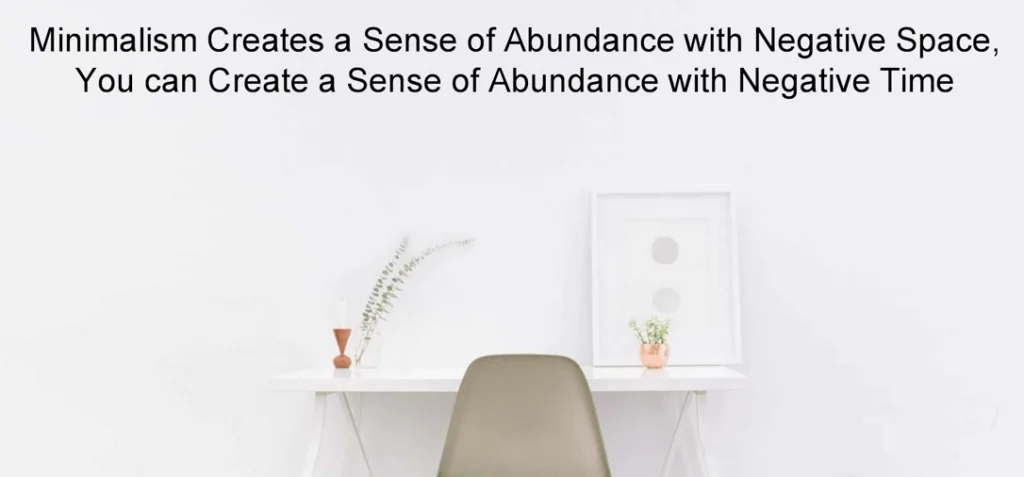
The challenge to our selves is whether when we look at this picture, does our calendar gives us the same feeling. Is this how our day feels like. Are we experiencing the richness.

Did you experience that you have a lot of time?
We should experience the same feeling with our time as what we experience when we take long, hot bubble baths.
So how do we design more negative time? Ryan list a few ways:
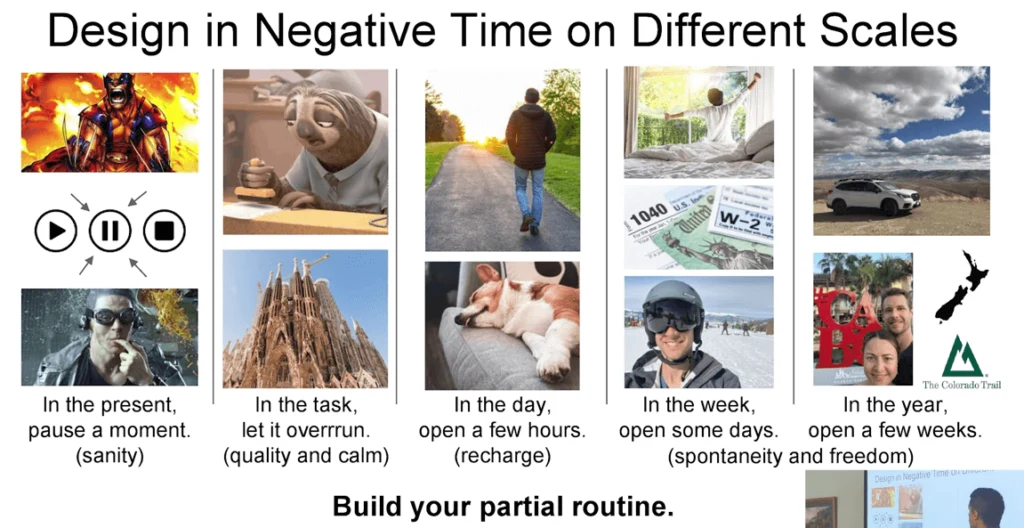
- Steven Covey talks about being response-able and stop when things get out of control in your life and deciding how you should respond. This is hard to do but we may have to practice intentionally.
- We can give certain task we want to do way more time than they deserve. Giving more time might make the task more enjoyable. (Kyith: I enjoy sweeping and mopping just not so much when I still need to write out a blog post for Sunday).
- Open up, and don’t schedule a few hours. FI should allow you the freedom to decide at the last moment what is on your schedule.
- In your week, schedule nothing on your calendar. You can go to visit somewhere that you used to not have the time for, or you could do deep research on tax laws if you wish to.
- In a year, schedule blocks of time for things that you need complete time freedom to do (usually is slow travelling).
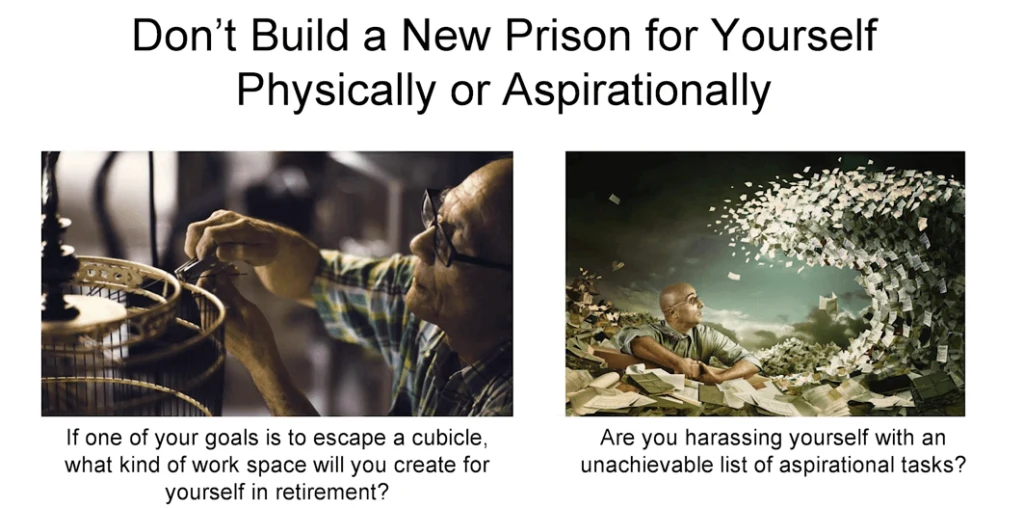
You just got out of work so why would you put yourself in another prison. An overbearing to-do list may be a good example.
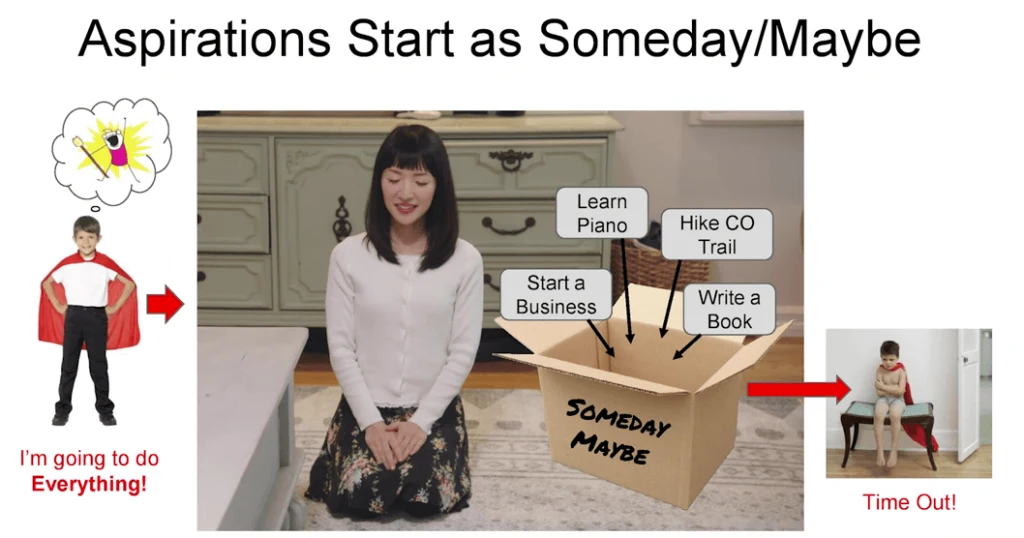
Whenever you have a lot of aspirations and ideas, follow the Marie Kondo + Getting-Things Done way by thanking those ideas and put them on a Someday/Maybe list.
2. Impermanence.
Many may reach F.I. after running long and hard in one direction.

And when you reached F.I. and then decide to quit your job, you might need to grapple with whether saving up and reaching F.I., in such a hard manner is a mistake.
A key concept here is that we ran so hard that we can not stop immediately.
This is called Inertia.
There may be something for us to transit more smoothly.

Acknowledge that things will be different just as we might or might not be the same person as twenty years ago.
I will continue to evolve in the future.

The internet remember things well and that can be a problem.
When we think about “What is next?” and you can think of a bunch of things to do.
But be careful that you become trap by a certain persona.
For example, Kyith is an investment blogger and that once he is F.I., a natural progression is to quit, not work, spend from his portfolio, or expand on his “side hustle” full time that is his blog.
Elvis Presley, Sergei Rachmaninoff and Helena Bonham Carter are good examples of the blurred lines navigating a persona people have of you or you have with yourself.
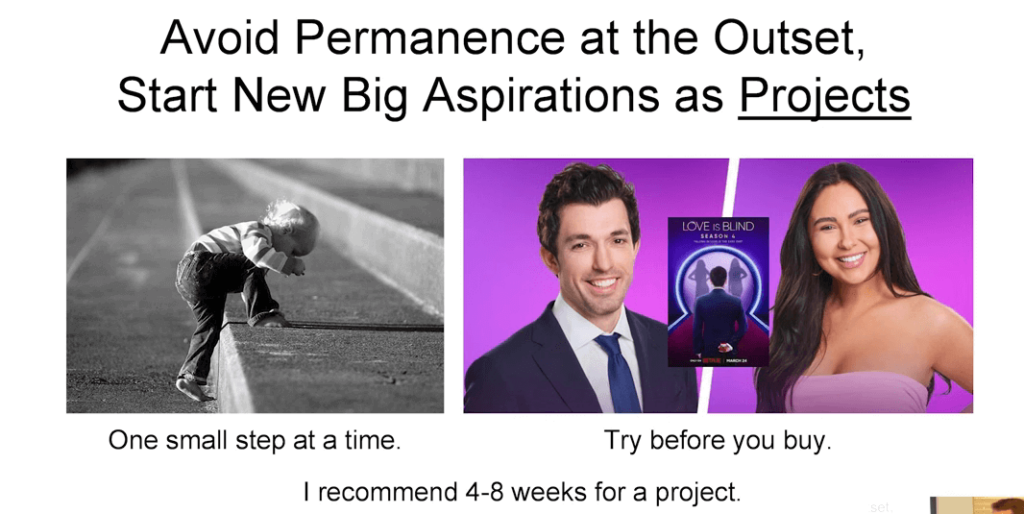
Start with small projects to see if you enjoy them. Try first before you buy.

3. Ikigai.

Confluence of:
- What you love.
- What the world needs.
- What you are good at. Opportunity to achieve mastery in a certain subject/comptency.
- What you can
be paid for. Rewarded for. You need to feel that the world values your contribution.
If you find that intersection, you created a sustainable model to do something for your life and created your reason for getting up in the morning or your being.
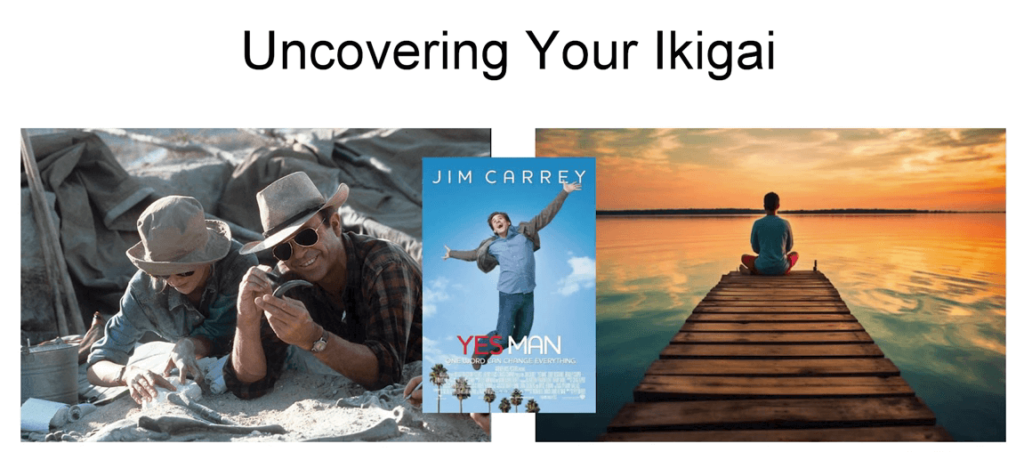
We have to recognize that uncovering your Ikigai is really hard.
Important Note from Kyith: Okay, so there is this Ikigai diagram that you see above (that intersecting diagram). That is kinda NOT the real Ikigai.
My chairman and friend Christopher Tan became fascinated with how we can think of a life best lived and his fascination took him down the path of understanding Ikigai better. He is currently a certified Ikigai coach. You can read about this more in this post here. There is a big misunderstanding of what Ikigai is.
Long story short, Ikigai may not be something that hard to find. I describe it as something that you find meaningful, that give you great satisfaction but if I don’t enlighten you, you might not notice it.
Despite Ryan getting Ikigai wrong (like all of us), I do think that the elements of Ikigai is one major recurring theme that you will consistently consider when planning or in F.I. because we all have to come to terms with our satisfaction and working.
Bringing all together
A good life is one where Negative time, impermanence and Ikigai come together.
We all have a tendency to think life is a straight line from point A to point B.
However, our life should look more like a meandering path like below:

I think impermanence is central and a significant realization because many felt that the path is linear when life is more like getting on a bus to somewhere, take a break, then get on another bus.
In each phase of our life, we have to tackle about what we do, meaning, love or satisfaction and whether we get paid enough.
I find that when Ryan explicitly share with us negative time and impermanence, he puts a name to two common mental struggles we experience not just in F.I. but in our current lives. We feel guilty if we are “wasting time” if we are not being productive. The stakes are high if we get how we prepared for our next phase of life wrong.
This may change how we look at life.
But by far, the biggest impact is when you truly understand the explicit reason why some Japanese can have a happy life.
I hope I have the opportunity to digest and write something about it.
If you want to trade these stocks I mentioned, you can open an account with Interactive Brokers. Interactive Brokers is the leading low-cost and efficient broker I use and trust to invest & trade my holdings in Singapore, the United States, London Stock Exchange and Hong Kong Stock Exchange. They allow you to trade stocks, ETFs, options, futures, forex, bonds and funds worldwide from a single integrated account.
You can read more about my thoughts about Interactive Brokers in this Interactive Brokers Deep Dive Series, starting with how to create & fund your Interactive Brokers account easily.
- Using Current Rental Income for F.I. Income Planning May be Flawed. (With 15 Years of Singapore HDB Rental Income Data.) - May 27, 2024
- PLH HDB Flats – Restrictive but May be Ideal Retirement Living for F.I.R.E People. - May 25, 2024
- Reflecting about A Stupid Income Strategy I Came Up With - May 23, 2024
